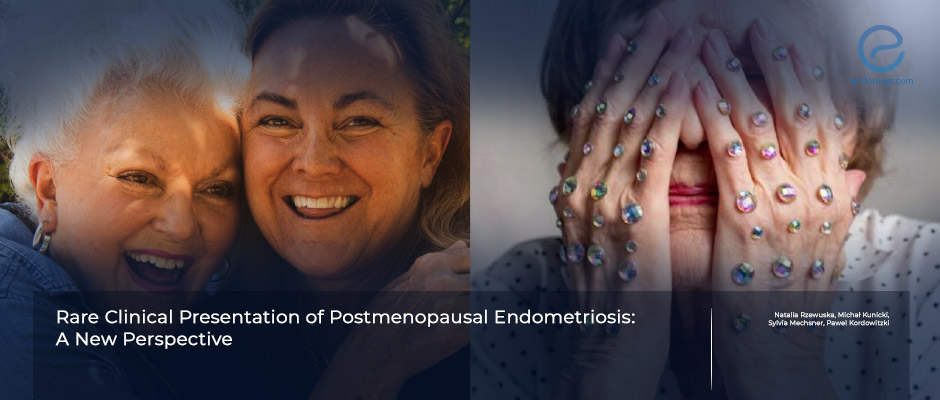Diagnosis and the Treatment of Postmenopausal Endometriosis
Dec 15, 2023
Regular clinical follow-up of endometriotic women after menopause is important.
Key Points
Importance:
- Both the pathogenesis and clinical manifestations of postmenopausal endometriosis have a lot of unknown aspects compared to premenopausal patients.
Highlights:
- Endometriotic lesions should be evaluated at least once a year by pelvic ultrasound and MRI even after menopause.
What's done here:
- Researchers from the Warsaw Medical University, under the leadership of Dr.Kordowitski, penned a revies about the recent knowledge of postmenopausal endometriosis.
- The authors aimed to gather practical clinical instructions for clinicians about the rare types and malignant transformation of endometriosis in the postmenopausal period of women.
Basic Outlines:
- Post-reproductive age endometriosis symptoms are more heterogeneous than those of childbearing age and even may resemble symptoms of gastrointestinal or urinary tract tumors and diseases.
- The authors gave examples from the cases of the intestines, liver, pancreas, stomach, urinary, and skin endometriosis, with non-gynecological manifestations.
- Regarding DIE cases without typical symptomatology, the progression of symptoms after menopause in women without hormonal replacement therapy is surprising, especially considering endometriosis is an estrogen-related disease.
- The pathogenesis of postmenopausal endometriosis is also not clear and demands detailed molecular and genetic studies:
- NAD+-dependent deacetylases called Sirtuins are metabolic sensors for maintaining body homeostasis.
- Sirtuins are under examination in endometriosis for their potential role in modulating inflammation, cell proliferation, and sex hormone sensitivity.
- The role of Sirtuins in postmenopausal endometriosis is not well-explored.
- The possible recurrence of endometriosis in the postmenopausal period has a possible mechanism correlated with adiposity because overweight women have a higher incidence.
- The malignant transformation risk of endometrioma and DIE is 1%. The Society of Radiologist Ultrasound recommends a minimum once-a-year control of endometriotic lesions after menopause.
- The treatment in postmenopausal women includes surgery, depending on the location of the lesion, and aromatase inhibitors.
Lay Summary
About 190 million women around the world are diagnosed with endometriosis. The majority of the cases are between 30 and 40 years of age. After menopause, the incidence of endometriosis declines to 2-5%, and it is more common in women who continue hormonal treatment. The risk increases if the hormonal therapy is estrogen alone or tamoxifen.
The symptoms of endometriosis, such as pelvic pain, dysmenorrhea, and non-menstrual pain, largely depend on estrogen. Naturally, these symptoms due to decreasing estrogen levels are expected to be relieved in the postmenopausal period. On the contrary, even in some patients who don't receive postmenopausal hormonal replacement therapy, symptoms may aggravate, and the disease could have potential malignant transformations.
Researchers from the Department of Gynecologic Endocrinology of the Medical University of Warsaw, Poland, under the leadership of Dr. Kordowitski, decided to attract the attention of clinicians by giving recent knowledge about rare conditions in the postmenopausal period of endometriosis. This advising paper was recently published in the scientific journal Aging and Disease.
The authors discussed the topic based on the pathogenesis of endometriosis in women with or without hormone replacement therapy, molecular and genetic features, the clinical picture of extragenital and deep infiltrating endometriosis, and the therapeutic options. Besides gynecologic symptoms, there could be urologic, intestinal, or other symptoms, depending on the site of the disorder, that may cause the misdiagnosis of postmenopausal endometriosis. Furthermore, the postmenopausal age period is the risk factor for developing malignant transformation in women. The risk of malignancy is estimated at 1% in deep-invaded endometriosis and endometrioma.
The treatment of postmenopausal endometriosis must start with the discontinuation of hormonal therapy. Aromatase inhibitors could be given to women who were taking tamoxifen. But long-term use of aromatase inhibitors can cause osteoporosis and possible fractures, and also, women can experience side effects such as hot flushes, vaginal dryness, and arthralgias. The surgical approach in this period of life is recommended when the conservative treatment is unsuccessful.
Research Source: https://pubmed.ncbi.nlm.nih.gov/37962456/
postmenopause aging deep infiltrating endometriosis SIRT1 sirtuin activator pelvic pain malignant transformation letrozole extragonadal endometriosis.

